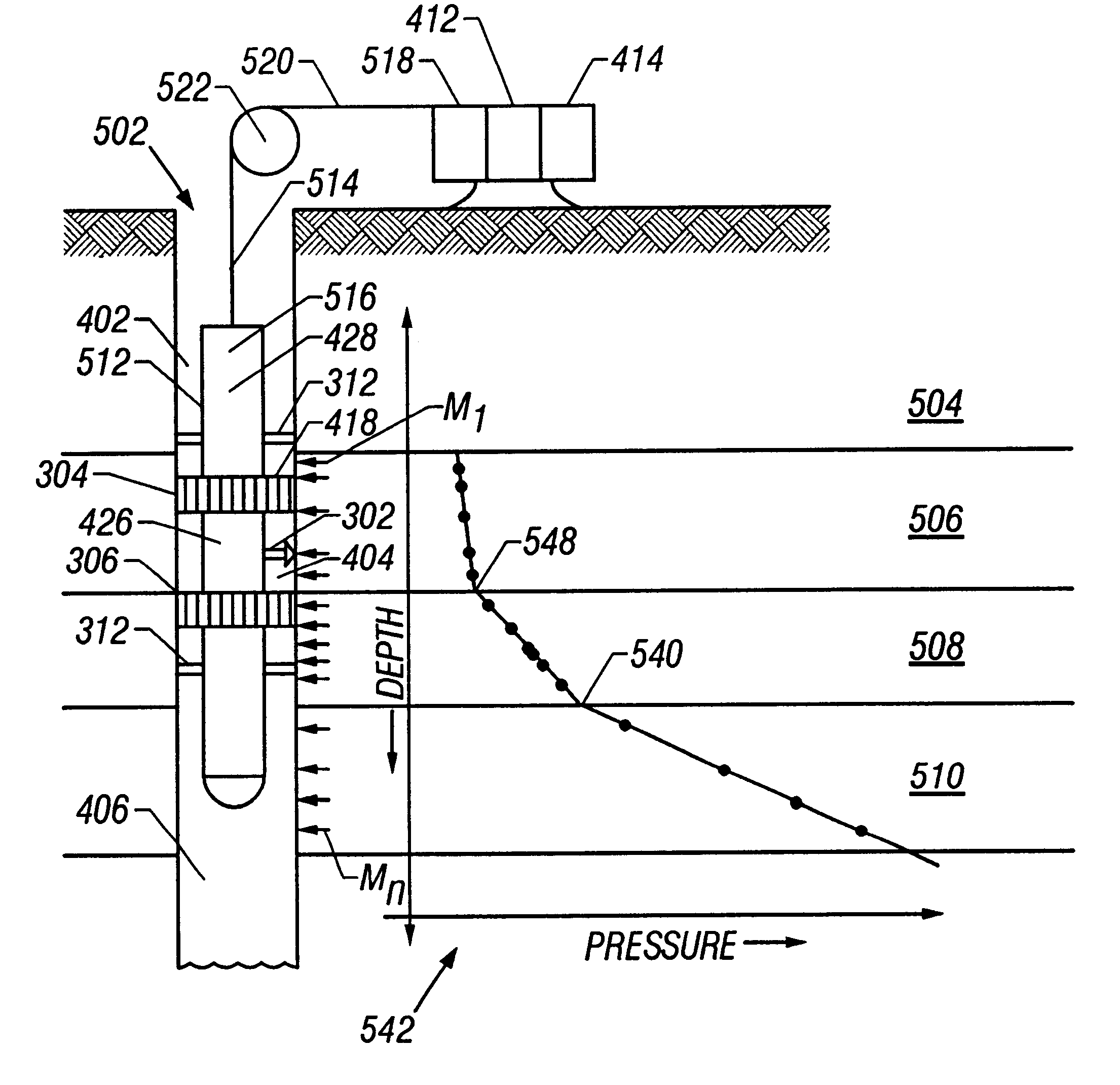Method for in-situ analysis of formation parameters
a technology of insitu analysis and formation parameters, which is applied in the direction of survey, fluid removal, borehole/well accessories, etc., can solve the problems of significant time and money required for retrieving drill string and running a second test rig into the hole, and the commercial development of hydrocarbon fields requires significant amounts of capital
- Summary
- Abstract
- Description
- Claims
- Application Information
AI Technical Summary
Benefits of technology
Problems solved by technology
Method used
Image
Examples
Embodiment Construction
FIG. 2 is a drilling apparatus according to one embodiment of the present invention. A typical drilling rig 202 with a borehole 204 extending therefrom is illustrated, as is well understood by those of ordinary skill in the art. The drilling rig 202 has a work string 206, which in the embodiment shown is a drill string. The drill string 206 has attached thereto a drill bit 208 for drilling the borehole 204. The present invention is also useful in other types of work strings, and it is useful with a wireline, jointed tubing, coiled tubing, or other small diameter work string such as snubbing pipe. The drilling rig 202 is shown positioned on a drilling ship 222 with a riser 224 extending from the drilling ship 222 to the sea floor 220. However, any drilling rig configuration such as a land-based rig may be adapted to implement the present invention.
If applicable, the drill string 206 can have a downhole drill motor 210. Incorporated in the drill string 206 above the drill bit 208 is a...
PUM
 Login to View More
Login to View More Abstract
Description
Claims
Application Information
 Login to View More
Login to View More - R&D
- Intellectual Property
- Life Sciences
- Materials
- Tech Scout
- Unparalleled Data Quality
- Higher Quality Content
- 60% Fewer Hallucinations
Browse by: Latest US Patents, China's latest patents, Technical Efficacy Thesaurus, Application Domain, Technology Topic, Popular Technical Reports.
© 2025 PatSnap. All rights reserved.Legal|Privacy policy|Modern Slavery Act Transparency Statement|Sitemap|About US| Contact US: help@patsnap.com



